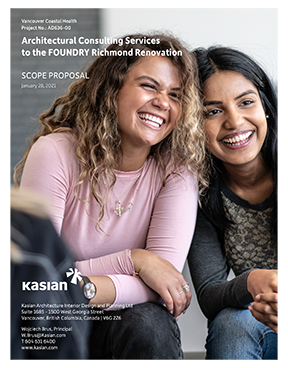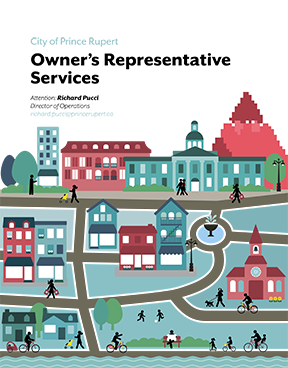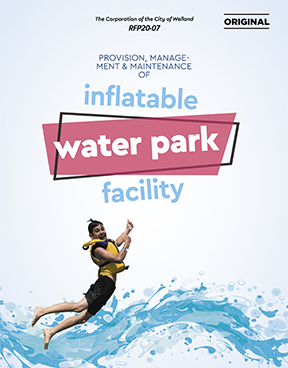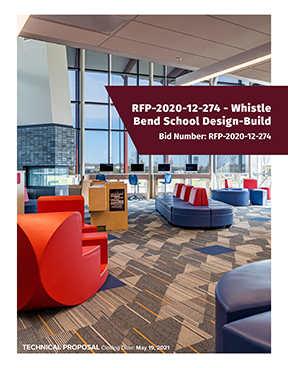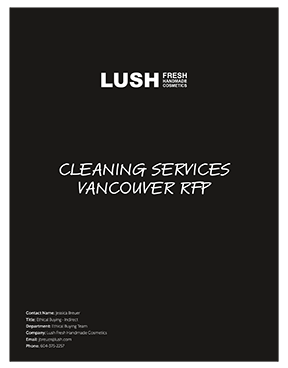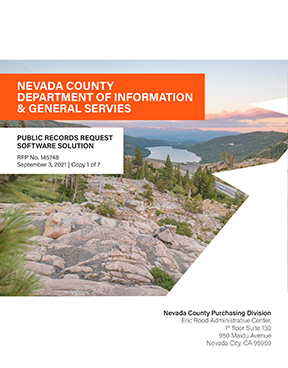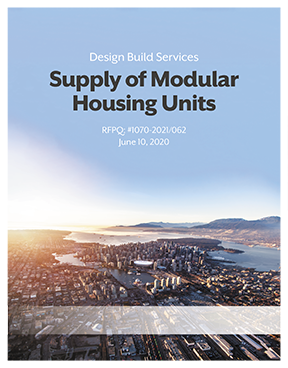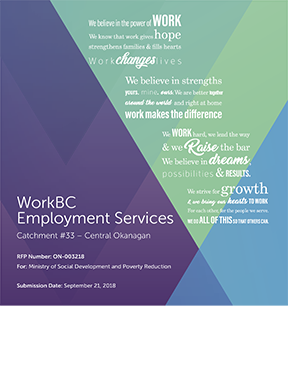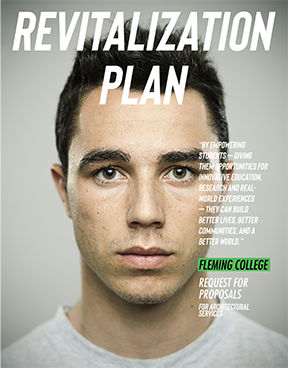Proposal Writing
When losing is not an option
Just Like You, Our Proposal Writers
Love to Win
Our proposal writing service will dramatically improve your chances of winning your next RFI, RFQ, or RFP (Request for Proposal).
A winning business proposal demands a team of proposal experts that obsess over every detail. For example, you need freelance bid writers that author score-maximizing responses and graphic designers who communicate the strengths of your bid visually.
We ensure every requirement is met and deliver a submission on-time and stress-free. And we know how to write a winning proposal, with the results to prove it.
We work with clients from BC to Ontario with proposal writers located in Vancouver, Calgary and Toronto.
Move Your Bid from the Side of Your Desk to the Front of Ours
There is a strong chance you don’t like RFP proposal writing. As a result, you probably do them at the end of the day or on weekends. However, they need to get done because they represent new revenue and growth opportunities.
Authoring professionally written bids is exciting for our team of proposal writers, editors, and designers. You’ve got a business to run, leave the freelance bid writing to us. We will show you how to answer an RFP successfully.
Let Our Proposal Experts Be Your Competitive Advantage
We write four to five tenders every month. As a result, we’ve written nearly 500 submissions over the past 10 years. It’s true we’ve won more than our fair share. But we’ve lost a few as well. Each RFP response, however, is an opportunity to learn what works and how to persuade evaluators.
Above all, each RFP or RFQ debrief has helped us refine our methodology and improve our clients’ odds of winning. With every submission, our RFP proposal writing service gets stronger and our team of proposal experts more capable. When you hire Outsource Marketing, our bid and tender consulting experience become your competitive advantage.
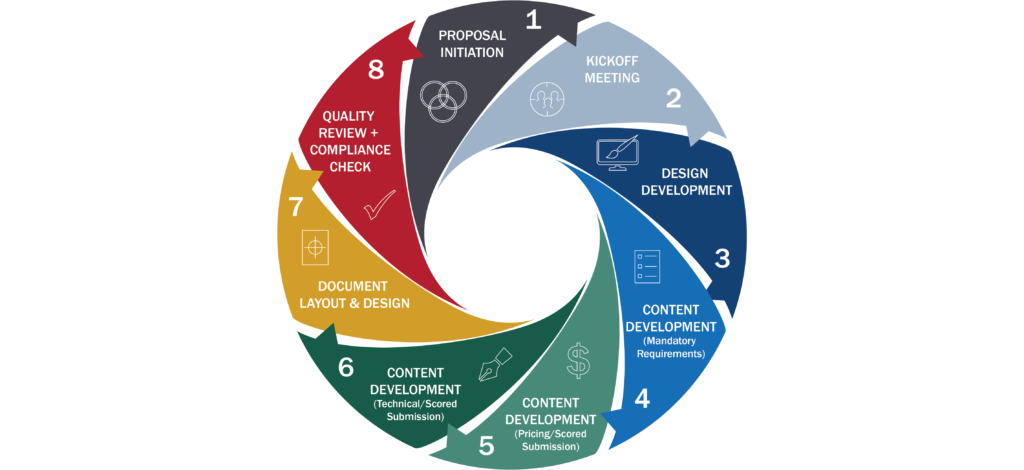
How to Write an RFP Proposal
Proposal chaos can reign supreme without a well-defined process to follow. In addition, you need an understanding of best practices and tools to streamline the work. If you don’t have a proven system to guide you, your chances of authoring a winning submission are dramatically reduced.
From developing a winning proposal strategy through to final compliance and quality check, our bid writing service is designed to efficiently produce high-quality proposals – with less anxiety and stress.
We’ve Helped Organizations Just Like Yours Win
It’s one of the first questions we get – “Have you ever worked on a similar business proposal?” The answer is almost always “Yes.” We’ve helped clients from nearly every industry, including not-for-profit, win all types of proposals – projects large and small, across North America.
From a brief sales proposal to the most technical RFP submission, we’ve supported clients, just like you, win new work with professionally written business proposals. We’ve perfected the art of tailoring our bid writing service to fit the needs and budget of our clients.
A Few of our Proposal Writing Projects
An Impressive Record of Tender Writing
When responding to a public RFQ or RFP, competition can be fierce and evaluators demanding. In other words, the difference between success and failure is razor-thin. We beam with pride every time a client wins. Over the past decade, our technical bid and tender writers have done a lot of smiling.
We’ve been on the winning side of more than 300 submissions with a total value of in excess of $1B. It’s a team effort, and we are fortunate to work with some very successful firms. But our clients are quick to acknowledge our sizable contributions.
Book your Free Consultation Today!
During an initial 15-minute call, you’ll understand why clients return to Outsource Marketing for our proposal writing services, and how our proven proposal system delivers results.
We’d be happy to share some past winning proposal samples.
Frequently Asked Questions
Proposal Writing
Our mission is to help organizations win exciting new projects with professionally written, incredibly persuasive proposals.
To help organizations, regardless of size or proposal-writing experience, author better bids and tenders, we are committed to answering an extensive list of frequently asked, proposal-related questions. We answer a few additional questions every week.
If you have a question, please email us, and we will respond in our next update.
What is an RFx?
RFx is a term that refers to a family of procurement documents that are used to request information or proposals from suppliers or vendors. The “R” stands for “Request,” and the “x” can refer to different types of procurement documents, depending on the specific purpose:
- RFQ: Request for Quote (sometimes also refers to Request for Qualifications)
- RFI: Request for Information
- RFP: Request for Proposal
- RFSO: Request for Standing Offer
Each of these RFx documents serves a different purpose in the procurement process. For example, an RFQ is used to request a price quote for a specific product or service, while an RFI is used to gather information from potential suppliers before initiating a formal procurement process.
An RFP is used when a buyer wants to request detailed proposals from suppliers for a more complex project or product, and government agencies in Canada use an RFSO to establish an ongoing contract with a supplier.
Overall, the use of RFx documents can help streamline the procurement process and ensure that the buyer receives the information and proposals necessary to make informed purchasing decisions.
What is an RFQ?
RFQ stands for “Request for Quote.” It is a document used in procurement and purchasing processes to request quotes or bids from suppliers or vendors for specific products or services.
An RFQ typically includes details such as the product or service description, the quantity required, delivery or shipping requirements, and any other relevant information suppliers need to provide an accurate quote. RFQs are often used when the buyer has a specific product or service in mind and wants to compare prices and terms from multiple suppliers before making a purchase decision.
What is an RFP?
RFP stands for “Request for Proposal.” An RFP is a document that organizations use to solicit proposals from potential vendors or service providers. The RFP typically outlines the scope of work that the organization is looking to have completed and the requirements for the proposal itself.
The document may also provide instructions on how the proposals should be formatted and submitted, and may include evaluation criteria that will be used to assess the proposals.
The purpose of an RFP is to provide a structured and transparent process for selecting a vendor or service provider that can meet the organization’s needs.
What is an RFSO?
RFSO stands for “Request for Standing Offer.” It is a type of procurement document used by government agencies in Canada to establish an ongoing contract with a supplier for the supply of goods or services at pre-established prices, terms, and conditions.
An RFSO differs from a traditional bid or tender process because it is used for ongoing or repetitive requirements rather than a one-time purchase. Suppliers who respond to an RFSO may be pre-qualified or shortlisted based on specific criteria, and once the contract is established, they are obligated to provide the goods or services at the pre-negotiated prices, quantities, and delivery schedules.
The RFSO process is typically used for lower-value purchases or for goods and services that are required on an ongoing basis, such as office supplies, maintenance services, or IT support. By establishing a standing offer, government agencies can streamline the procurement process, reduce administrative costs, and ensure a consistent supply of goods or services over a period of time.
How many RFPs are issued every year in Canada and the US?
It’s difficult to determine the exact number of Request for Proposals (RFPs) issued annually in Canada and the United States since there is no centralized database or tracking system for RFPs.
However, several sources provide estimates and data on the number of RFPs issued. For example, the US government alone publishes thousands of RFPs yearly, spending billions of dollars. Additionally, many state and local governments and private sector organizations issue RFPs for various projects and initiatives.
According to some estimates, over 10,000 government RFPs issued each year in Canada and the United States. This number includes RFPs issued by federal, state, and local governments for various products and services. However, it’s important to note that this number is only an estimate and may not reflect the actual number of RFPs issued.
It’s also worth noting that the number of RFPs issued can vary significantly depending on factors such as the economic climate, government spending priorities, and the level of demand for goods and services.
What is the difference between a request for proposal (RFP) and a request for qualifications (RFQ)?
An RFQ is short for either Request for Quotation or Request for Qualifications. The difference is that the Request for Quotation is a competitive bid document that requests suppliers and contractors to submit a price for their products or services. The Request for Qualification seeks work history, credentials and experience. A Request for Qualifications identifies suppliers or contractors who meet a set of minimum qualifications.
Sometimes the Request for Qualifications can precede the RFP and is used to prequalify proponents. Those who successfully meet the qualification criteria outlined in the RFQ move on to the RFP stage. The RFQ usually requests experience, capabilities, unique qualifications, team roles, and responsibilities.
The RFP, on the other hand, will usually focus on the timelines, fees, work plan, methodology, risk mitigation strategies, value add, and equipment or materials to be used. This two-step approach creates a multi-staged process, so only the best-suited proponents are invited to submit a response to an RFP – saving everyone time and resources.
What is the difference between a bid and a tender?
Both “bid” and “tender” are terms used in procurement and purchasing processes to refer to offers made by suppliers or vendors for a specific project, contract or product. However, there are some key differences between the two terms:
A “bid” is typically used in a competitive bidding process, where multiple suppliers or vendors are invited to submit their offers for a project or contract. Bids are often evaluated based on price, quality, and other criteria, and the lowest bidder who meets the requirements is usually awarded the contract.
A “tender” is similar to a bid but may not always involve a competitive bidding process. In some cases, a tender may be an invitation for offers from a select group of suppliers or vendors who have been pre-qualified or shortlisted by the buyer. Tenders may also be used for projects or contracts that require a more complex evaluation process, where factors such as technical expertise, experience, and quality are given more weight than price.
In summary, while both bids and tenders involve offers made by suppliers or vendors, bids are typically used in competitive bidding processes, while tenders may involve a more selective or complex evaluation process.
What is proposal writing?
Proposal writing is a type of business writing used when authoring responses to an organization’s request for a proposal (i.e., Request for Proposal or RFP).
Proposal writing is persuasive and focuses on convincing the reader or evaluator to accept the proposal. The author tailors the narratives to address how the client will benefit from the offer or solution. A high-quality proposal can attract clients, boost sales and grow your firm.
While writing, you must consider what the client cares about, their concerns, and what resonates with them. You will also have to explain why your offer or solution is the ideal choice.
There are many things to consider when writing your proposal, like the sections, format, the result you want to achieve, and the audience reading your proposal. There are also different types of proposals, such as business proposals, unsolicited proposals, solicited proposals, grant proposals, investment proposals and internal project proposals.
Regardless of the type of proposal, it is important to remember that it represents you, your team and your firm. It’s the first impression you give the client; it must be written well if you want to win.
What is the difference between proposal writing and grant writing?
The objective of a proposal, and therefore a proposal writer, is to advocate a specific solution that addresses a well-defined need of an organization. A grant, and therefore a grant writer, aims to demonstrate how a given project aligns with the objectives of a particular funder.
Every year, millions of grant dollars are awarded to fund nonprofit organizations, small businesses, scholarships, medical care, and educational assistance. These organizations prepare a grant proposal to secure funds for their new projects or creative programs.
Grant writing involves submitting proposals for financial assistance to government agencies, foundations, or other funders. It is one type of fundraising activity.
Successful grant writers know how to sell a program or project and convince funders that their initiative will benefit the community or society at large.
What is a proposal Go/No-Go process?
Implementing a rigorous Go/No-Go process before proceeding with a proposal is essential to ensure that you are investing time and resources into proposals with a high likelihood of success. The following are key steps to implementing a rigorous Go/No-Go process:
Establish Clear Criteria: Before you begin the Go/No-Go process, it is essential to establish clear criteria for evaluating potential opportunities. These criteria should be based on your organization’s goals and objectives and should consider factors such as budget, scope, technical feasibility, and the likelihood of success.
Conduct Initial Research: Once you have established your criteria, conduct initial research to determine whether a potential opportunity meets those criteria. This could involve reviewing the RFP (Request for Proposal), researching the customer’s needs and requirements, and assessing your organization’s capabilities and resources.
Evaluate Risks and Benefits: After conducting initial research, evaluate the risks and benefits of pursuing the opportunity. This could involve assessing the competitive landscape, considering the potential impact on your organization’s reputation and resources, and weighing the opportunity’s costs and benefits.
Make a Go/No Go decision: Based on evaluating the risks and benefits, make a Go/No-Go decision. If you decide to proceed with the opportunity, develop a proposal strategy that outlines the key steps and actions required to win the proposal. If you choose not to proceed, communicate your decision to the team and move on to other opportunities.
Monitor Progress: Throughout the proposal process, continue to monitor progress against your established criteria and adjust your strategy as necessary. This could involve conducting regular check-ins with the team, tracking progress against key milestones, and making necessary course corrections.
Overall, implementing a rigorous Go/No-Go process involves establishing clear criteria, conducting initial research, evaluating risks and benefits, making a Go/No Go decision, and monitoring progress throughout the proposal process. By following these steps, you can ensure that your organization invests time and resources into opportunities that have a high likelihood of success
Where did the term Go/No-Go originate? [FUN FACT]
The term “Go/No-Go” is believed to have originated in the aerospace industry, specifically concerning manned spaceflight programs like NASA’s Apollo missions. It refers to the decision point when a launch is imminent, and all systems are checked and evaluated to determine whether the launch should proceed (“Go”) or be postponed or cancelled (“No-Go”).
During the Apollo program, a Go/No-Go decision was made at several critical points in the countdown to launch, including at T-9 minutes and T-31 seconds. The decision was made by a team of engineers and flight controllers who evaluated a checklist of systems and subsystems to ensure that everything was functioning properly before giving the final approval to launch.
The concept of Go/No-Go decision-making has since been adopted by many other industries and contexts, such as project management, proposals, and product development, where it is used to determine whether a project or initiative should proceed or be halted based on a set of predefined criteria.
How long does it usually take to author a persuasive proposal?
The time to write a proposal depends on the complexity and requirements of the RFP or RFQ.
You can spend three to four weeks, sometimes more, writing a good proposal. Complex proposals such as Design-Build (DB) or Public-Private Partnerships (P3) can take longer. There are times you may have to work within a short window, like two or three weeks, due to the urgency of the proposal.
A proposal always comes with a hard deadline, and the best way to meet that deadline is to develop a work-back schedule to complete the proposal at least one day before it’s due.
Most proposals authored by Outsource Marketing are completed within three weeks.
Once you know when the proposal must be submitted, you work back and schedule the necessary tasks and milestones accordingly.
What are some proposal writing best practices?
Successful proposals often incorporate a long list of time-tested best practices refined over many years. The result of using best practices is an incredibly persuasive proposal – an attractive, easy-to-read and navigate proposal that convinces the reader that your organization is uniquely qualified to win the contract.
Here are some proven best practices:
- Win Strategy: RFPs contain many requirements, and you can quickly lose track of your primary messaging as you write the response. A competitive win strategy will help guide and structure your efforts, including defining your value proposition and critical themes to weave throughout the proposal.
- Cover Letter: Writing a good cover letter can help engage the client and clarify that your firm is uniquely positioned to solve their problem. Avoid boilerplate text and focus more on what the client is looking for in a proponent.
- Executive Summary: The executive summary can be a valuable component of your proposal as it can engage the reader and inspire them to read the entire document. Apart from summarizing your recommendation, use it to highlight the proposal’s salient features and the benefits of your solution. Try to structure your executive summary to match the evaluation criteria. This will differentiate your proposal and ensure the evaluators know precisely why your organization is the suited proponent.
- Client-focused Content: A common mistake is when a proposal is more about the proponent’s organization and team and less about the client. Many proposals lack the client’s perspective. Ensure you understand and address the client’s concerns within your response.
- Professional Design and Layout: Poorly designed proposals are difficult to read, cumbersome and fail to communicate your firm’s professionalism to the evaluator(s).
What is the difference between mandatory and technical requirements in an RFP?
In an RFP (Request for Proposal), mandatory requirements and technical requirements refer to two distinct categories of requirements.
Mandatory requirements, also known as “minimum requirements” or “compliance requirements,” are the basic criteria that a proposal must meet to be considered. These requirements are typically established by the organization issuing the RFP and are non-negotiable. Failure to meet one or more mandatory requirements will result in the proposal being disqualified from consideration. Examples of mandatory requirements include the deadline for proposal submission, the format of the proposal, and the required documentation.
On the other hand, technical requirements are the specific criteria that a proposal must meet to demonstrate that it meets the needs of the organization issuing the RFP. Technical requirements are typically established based on the needs of the organization, and they are often more detailed and specific than mandatory requirements. Examples of technical requirements include the proposed solution’s functionality, performance, security, and compatibility with existing systems.
In summary, mandatory requirements are the basic criteria that must be met to submit a proposal, while technical requirements are the specific criteria that a proposal must meet to address the organization’s needs.
What questions should you ask before hiring a proposal writer?
You aim to win as many proposals as possible to grow your business. You may need to hire a professional proposal writer, especially if you lack the capacity, have a poor track record of proposal success, cannot produce persuasive proposals and lack the design expertise.
In addition, hiring an expert will help you save time and reduce the anxiety of writing proposals.
Asking the right questions is a great way to be sure you hire only the best in the industry. Here are some essential questions to ask:
- How long have you been writing proposals?
- How many proposals have you completed?
- Do you have expertise in my industry/market sector?
- What is your process, and how will it contribute to producing a winning proposal
- How do you leverage technology to streamline the proposal process?
- Can you provide some examples of best practices and show how you’ve incorporated them in past proposals?
What are the pros of outsourcing your proposal writing?
Engaging an outsource proposal writer will always have pros and cons, but knowing the benefits will help you decide if this approach will work for your organization.
Besides, proposal writing is something only some enjoy, feel confident about, or have time to prepare. Let’s start with the pros listed below:
- Lower Overall Cost: The proposal writer can be brought on board for just the proposal or on an as-needed basis.
- Reduce Stress: Apart from reducing your stress of personally writing and submitting the proposal, the proposal writer reduces the stress involved in the overall preparation by planning and coordinating efficiently with your team.
- Ensure Professionalism: Most outsourcing services offer a complete package that includes planning, writing, design and review. You can develop quality and professional-looking proposals that create a good impression with the client.
- Offer External Perspectives: When you receive a complex RFP or RFQ, this is the perfect time to outsource the proposal as a proposal writer not only writes the response but also guides you through preparation, helps develop a competitive strategy, and works with you to resolve complexities.
- Improve Productivity: Productivity is enhanced when everyone focuses on what they do best. Proposal writing organizations do nothing but proposals, so they get very efficient at authoring them. For organizations that hire proposal writers, this means that their employees can dedicate their time to other responsibilities and not waste their time working on an RFP – especially when they are infrequent.
- Better Proposal Win Strategy: With the outsource service handling the minor details, you can focus on your organization’s competitive strategy, innovative solution or unique positioning.
- Subject Matter Experts: When you hire an external proposal writer or outsource the entire process, your team can focus on everyday business and contribute as subject matter experts.
What is a Proposal Content Library?
A Proposal Content Library is a centralized repository of pre-written content and templates used to develop proposals more efficiently and effectively. The content in a Proposal Content Library may include sections of proposals, sample responses to common questions, graphics and images, and other supporting materials.
A Proposal Content Library aims to provide a standardized and consistent approach to proposal development while reducing the time and effort required to create new proposals from scratch. With a library of pre-written content and templates, proposal teams can quickly and easily assemble proposals that meet the needs and requirements of the specific opportunity they are pursuing.
In addition to improving efficiency and consistency, a Proposal Content Library can help improve the quality of proposals by ensuring that they include the most up-to-date and accurate information. By regularly reviewing and updating the content in the library, proposal teams can ensure that they are using the latest best practices and messaging to communicate their value proposition to potential clients or customers effectively.
Overall, a Proposal Content Library can be a valuable tool for organizations that frequently develop proposals or respond to RFPs, as it can help to streamline the process and improve the overall effectiveness of their proposals.

